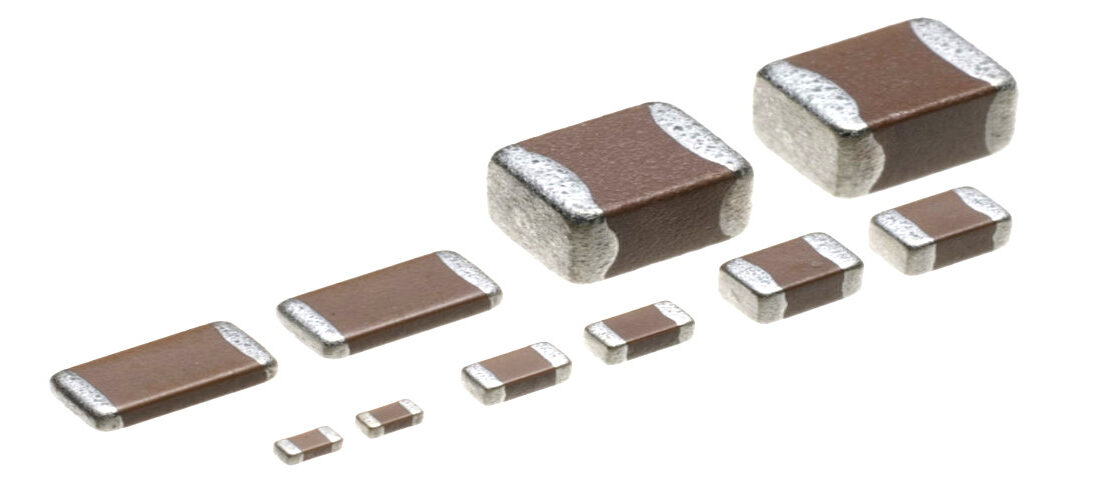
Solid and polymer tantalum capacitors vs. SMT MLCCs
- Posted by doEEEt Media Group
- On June 6, 2020
- 0
Tantalum Capacitors are included in the two primary capacitor technologies that are most often considered for surface-mount applications: electrostatic and electrolytic. The most common electrostatic types are MLCCs and film capacitors. Due to current bottlenecks in the procurement of surface-mount ceramic capacitors, however, designers are looking for substitutes to keep their production lines running smoothly, and to find long term replacements for hard to find ratings.
With electrostatic capacitors in short supply, one place designers can turn to is electrolytic. The most common electrolytic types are aluminum and tantalum (including both solid and polymer tantalum technologies). When looking to substitute for high capacitance MLCCs, it makes sense to pick tantalum electrolytic devices to get the broadest overlap in size, surface-mount ability, capacitance values, voltage ratings, and reliability. The most likely MLCC candidates for successful replacement by tantalum technology are the higher capacitance values in case of sizes from 0402 to 1210. Applications that require high capacitance for filtering or voltage stabilization are good candidates for replacement.
Although top-level comparisons of capacitance, voltage, tolerance, and size are useful as a starting point, however, MLCCs and surface-mount tantalums utilize different designs and materials in their construction. As a result, they have different electrical and mechanical properties. Instead of reviewing massive amounts of performance data, though, we will look instead at the key parametric differences that relate to the performance of the capacitors. Some helpful hints and suggestions for testing offered here will also further the goal of successfully substituting solid tantalum or tantalum polymer capacitors for MLCCs with maximum efficiency.
The Equivalent Circuit of a Capacitor
To simplify and organize your investigation, we will utilize the capacitor equivalent circuit as a model and discuss how the different elements of the circuit vary between MLCCs and tantalums. Figure 1 shows the universal equivalent circuit of a capacitor:
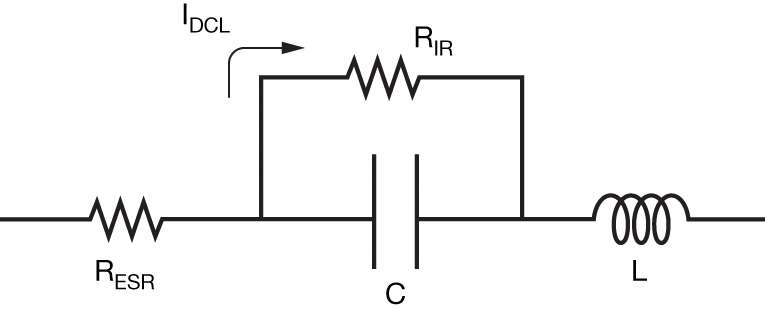
Figure 1 – Universal equivalent circuit of a capacitor
- RESR = equivalent series resistance in ohms. This is the real part of the impedance that produces losses via heat generation
- C = capacitance value in Farads. The reactance of this component is XC = 1 / 2πfC
- L = inductance in Henrys. The reactance of this component is XL = 2πfL
- RIR = insulation resistance (in an ideal capacitor this would equal infinity, but in an actual capacitor it’s a finite resistance value that can be used to calculate the DC leakage current value IDCL)
The overall impedance of the circuit is: Z=√(RESR)2 + (Xc – XL)2 in ohms.
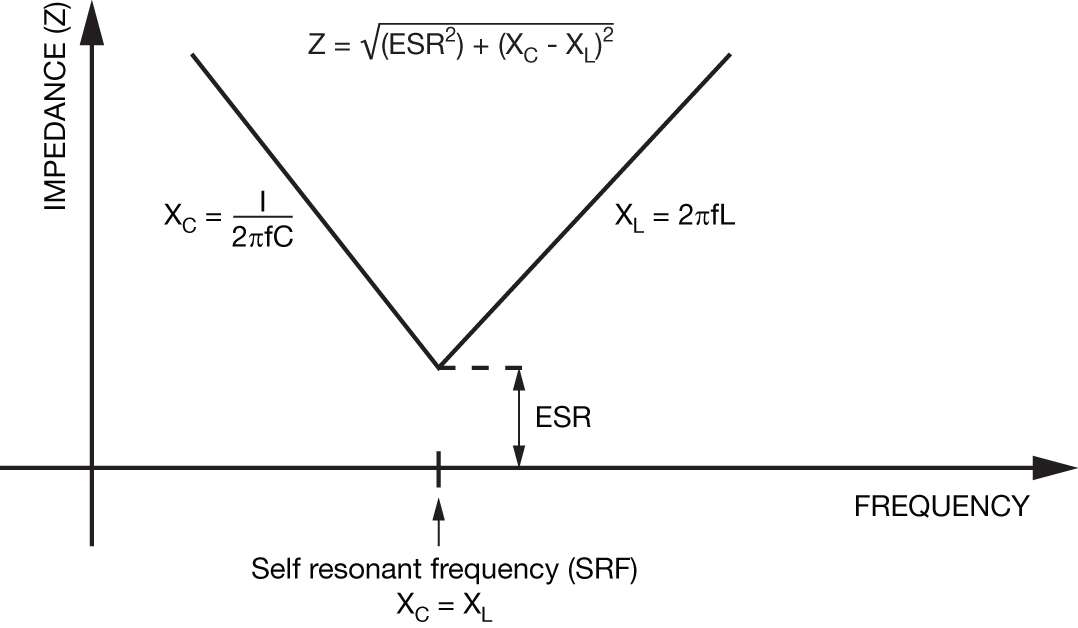
Figure 2 – Capacitor impedance as a function of frequency
Let’s take the components of the equivalent circuit one at a time and consider their effect on the overall circuit performance.
Capacitance (C)
Most MLCCs used in today’s applications are “Class II” types. This means that the capacitance value varies over temperature (temperature coefficient of capacitance (TCC)) in the following ways:
- ± 15 % from -55 °C to +125 °C for X7R dielectrics
- ± 15 % from -55 °C to +85 °C for X5R dielectrics

Figure 3 – Temperature coefficient of capacitance for Class II capacitors
MLCCs have another property that affects the capacitance value: the voltage coefficient of capacitance (VCC). As you apply voltage to a Class II MLCC, the closer you get to the rated voltage of the capacitor, the more the capacitance value is reduced.
Furthermore, these TCC and VCC properties are cumulative.
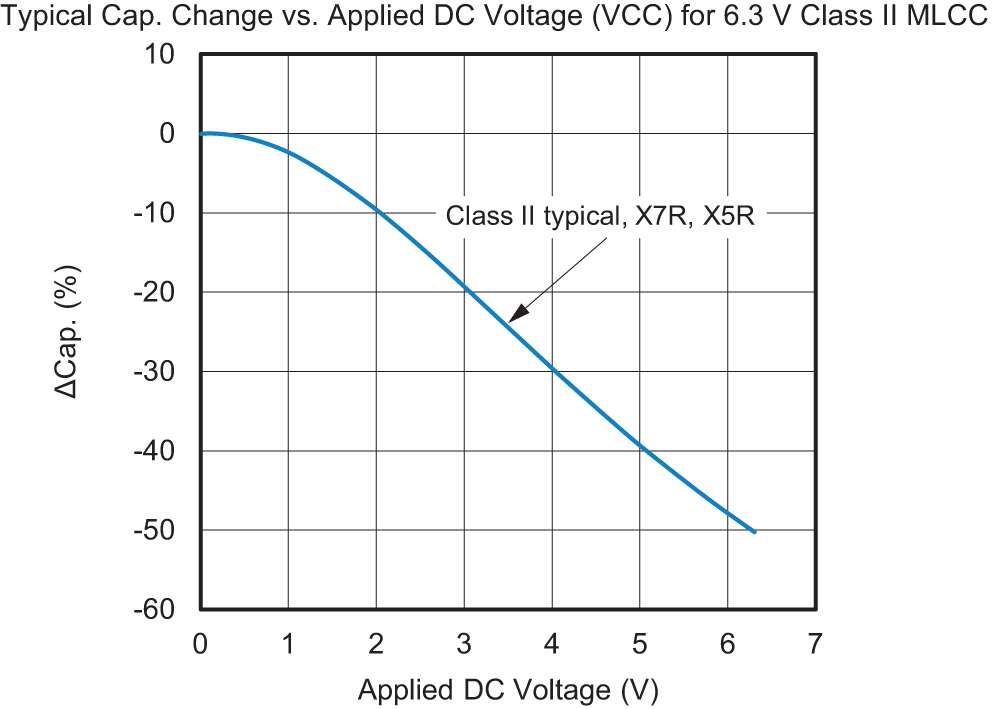
Figure 4 – Voltage coefficient of capacitance for Class II capacitors
For a Class II MLCC capacitor with rated voltage applied at 85 ºC, the effective capacitance value could be reduced to as little as 30 % of the stated value.
For solid tantalum and tantalum polymer devices, though, this VCC effect is insignificant. Regardless of the applied voltage, the capacitance value remains essentially unchanged.
For both solid tantalum and tantalum polymer capacitors, the capacitance value increases with temperature.
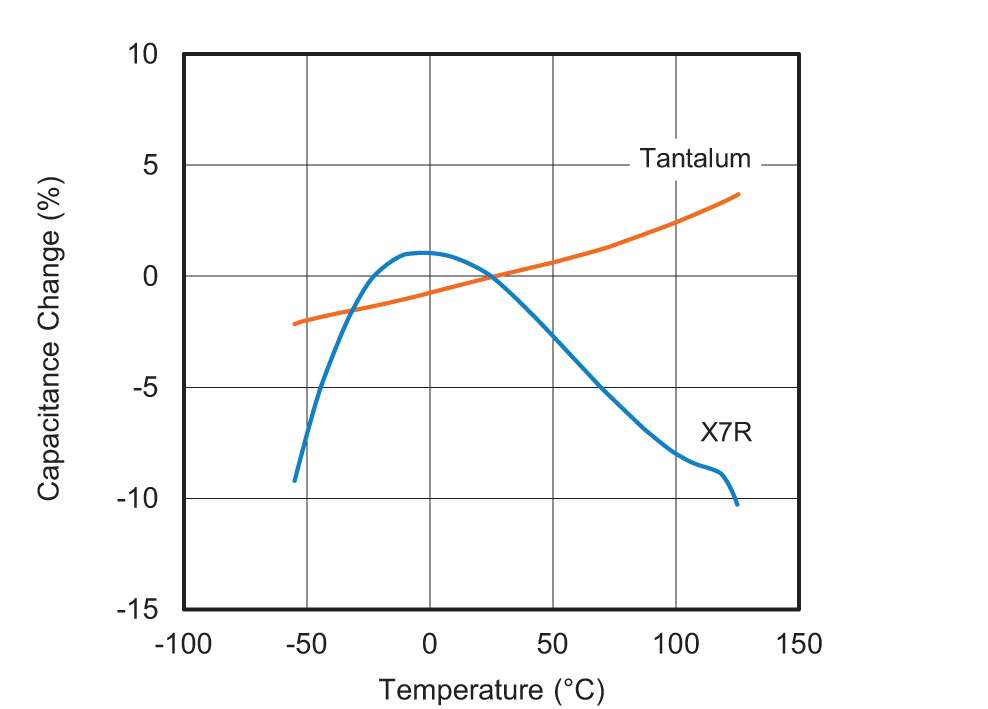
Figure 5 – Tantalum capacitors increase in value with temperature
ESR (RESR)
The ESR of a capacitor represents the real part of the impedance (Z) and includes all the resistive elements of the capacitor, including the terminations, lead frame (if used), electrodes, dielectric, and solid or polymer electrolyte system.
In general, MLCCs have lower ESR than either solid tantalum or tantalum polymer capacitors of the same voltage rating and capacitance values.
For a typical 47 µF, 6.3 V 1206 capacitor, the maximum 100 kHz ESR levels would be something like this:
- Solid tantalum ~ 0.9 Ω
- Tantalum polymer ~ 0.1 Ω
- MLCC ~ 0.003 Ω
These differences in ESR may or may not significantly affect performance in the circuit, depending on how much design tolerance for ESR is built in.
Here are some general comments on ESR:
- Lower ESR typically results in a capacitor that can handle higher RMS ripple current
- Lower ESR capacitors are more efficient for decoupling noise to ground
- Lower ESR is more effective for delivering high momentary current from bulk energy capacitors
- Very, very low ESR can sometimes lead to instability in feedback loop circuits
- ESR vs temperature can vary with different capacitor technologies, so be sure to check ripple current and power dissipation at both the low and high ends of the operating temperature range
- Changes in ESR could cause variations in RC time constants in timing circuits
Inductance (L)
The physical dimensions of the capacitor predominantly determine the effective series inductance. The width of the terminations and the gap distance between the terminations may have some effect as well. Also, capacitors with formed or “J” lead frames that create a longer current path between terminations may also result in slightly higher inductance. As long as the MLCC is replaced with the same footprint/case size of a solid tantalum or polymer tantalum, inductance should not be a significant factor in circuit performance.
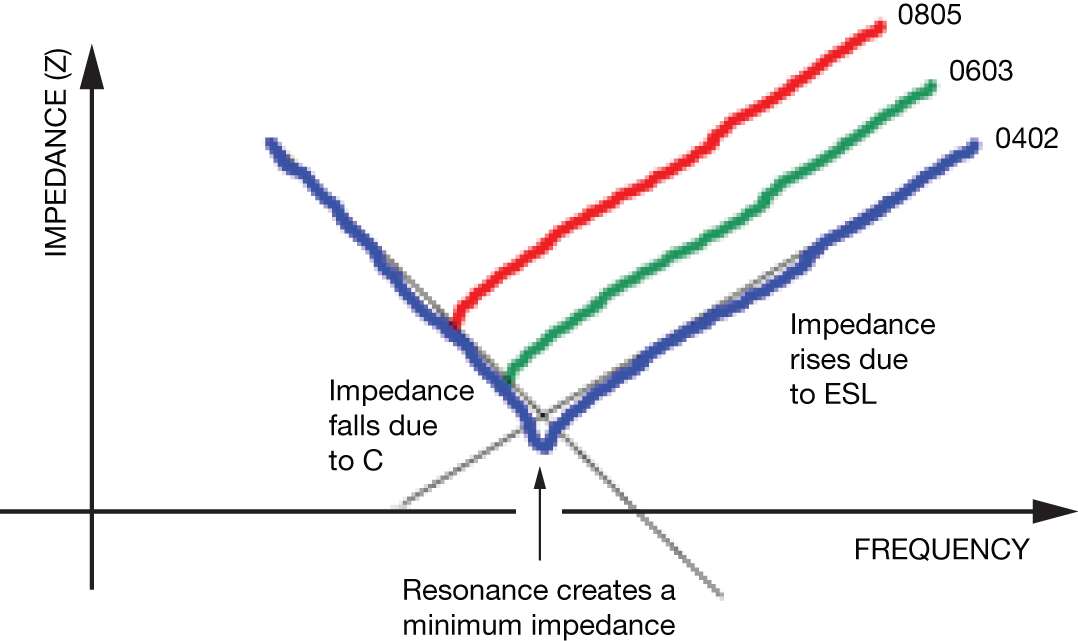
Figure 6 – Effects of impedance on different case sizes
One exception may be in very high-speed circuits where inductive loads may delay current delivery from the capacitor and cause performance degradation. The effects on impedance (Z) for different case sizes are shown in the Z vs Frequency graph below.
Leakage Current (IDC) / Insulation Resistance (RIR)
If we were able to have an ideal capacitor, it could be charged up and would remain charged forever. But of course, we don’t have ideal capacitors; they all exhibit some leakage current (IDCL).
This is a topic that is sometimes confusing to users. Traditionally, this characteristic is specified differently for electrostatic (MLCCs) and electrolytic (tantalums) devices.
For solid and polymer tantalums, the DC leakage is typically specified at 25 °C with rated voltage applied through a 1 kW resistor. It works out that for the Ta(2)O(5) dielectric material, DC leakage under these test conditions is usually specified to have a maximum value of .01 x CV in micro amps. So, for example, a 47 µF, 6.3 V solid tantalum capacitor would have a maximum DCL at rated voltage and 25 °C of .01 X 47 X 6.3 =2.961 μA.
For MLCCs, a different convention is followed to calculate the leakage current. Ceramic capacitors are usually specified with a value for insulation resistance (RIR). A typical specification for the insulation resistance of a 47 µf, 6.3 V X5R Class II MLCC would be10,000 MΩ or 500 Ω-F, whichever is less.
Using the second option, we have a 47 µf capacitor, so the insulation resistance would be 500 Ω-F divided by 47 x 10-6 Farads, giving us 10.64 MΩ. This value is < 10,000 MΩ, so we would use the 10.64 MΩ value. Then from ohms law, if 6.3 V is applied to the capacitor, the leakage current would be 6.3 V / 10.64 MΩ = 0.592 μA, which is about 5x lower than the tantalum.
Of course, the DC leakage currents for both technologies are higher at elevated temperatures. And when the applied voltage is de-rated to a value less than the rated voltage, DCL is reduced.
A Word About Voltage Derating, Polarity, and Reliability
Voltage derating – Designers should take note of recommended voltage derating guidelines for reliable long term performance. Recommended voltage derating for SMD tantalum capacitors are as follows:
- Solid tantalum capacitors with manganese dioxide solid electrolyte (MnO2) — Industry standards call for a 50 % voltage derating
- Tantalum capacitors with polymer electrolyte — The suggested voltage derating should be 10 % (i.e. apply no more than 9 V on a 10 V rated capacitor) for capacitors with a voltage rating of 10 V or less. For ratings above 10 V, a derating of 20 % should be applied
- MLCCs — It is generally considered safe to run ceramic chip capacitors up to the full rated voltage, but most designers de-rate down by 20 % to provide headroom and reduce the VCC effects that yield lower effective capacitance values.
Reliability – Based on industry standards for reliability calculation (i.e. Mil HDBK-217) for a given electrical and environmental operating condition, MLCCs and tantalums have very similar MTBK and FIT reliability results. In addition, neither technology has a built-in natural “wear-out mechanism.” So while users may have their own requirements for life testing, they may choose to forego extensive life testing for this exercise.
Summary – Characteristics of MLCC and Tantalum Technologies
MLCC Class II ceramics characteristics:
- Capacitance values can be significantly reduced by the effects of temperature and applied voltage
- Low DC leakage (high insulation resistance)
- Low ESR
- MLCCs are “non-polar” and don’t require special orientation on the PCB
Tantalum capacitor characteristics:
- High and stable capacitor values that are not significantly affected by an applied voltage
- Higher ESR and DCL than ceramics
- Good mechanical strength to withstand mounting and board flexure
- No piezoelectric properties that may result in induced circuit noise
- Tantalum capacitors are polarized devices, so correct polarity must be maintained on the PC board.
Both types exhibit good long-term reliability without significant “wear-out” mechanisms, and both are compatible with today’s RoHS mounting systems.
Designer’s Checklist
When looking to substitute solid tantalum or polymer tantalum capacitors for MLCCs, the following checklist may help achieve a smooth transition with minimum time expenditure:
- Do a top-level cross-reference based on capacitance, voltage, tolerance, and size. Make appropriate adjustments for voltage, where needed, to achieve the proper voltage derating
- Obtain samples and populate boards for testing
- Even though the capacitance/voltage/ size may be similar, check to make sure the pads will accommodate the different encapsulation and termination methods
- Perform functional testing at the room, low, and high operating temperatures
- Check peak power demands, operating voltage levels, transient and reverse voltages
Source: EDN article
by Dave Richardson, Senior Manager of Field Applications, Vishay. In addition to Tantalum for MLCC replacement EPCI, Kemet , AVNET ABACUS articles, EDN has published Vishay’s substitution guidelines.
Dave Richardson currently serves as Vishay’s senior manager of field applications engineering for the company’s tantalum and ceramic capacitors. Previously, he held the position of capacitor applications engineer at Sprague Electric and TRW. He is a distinguished fellow and past chairman of the EIA Tantalum Engineering Committee. Mr. Richardson holds a Bachelor of Science degree in electrical engineering from the University of South Carolina and a Master of Science degree in electrical engineering from the Massachusetts Institute of Technology.
- New ECSS-Q-ST-60C Standards Explained- Discover - June 4, 2025
- Accelerating Space Missions: Launch Faster with the ZSOM-F01 Rad-Tolerant SoM - June 3, 2025
- Miniature RF Connectors - April 29, 2025

0 comments on Solid and polymer tantalum capacitors vs. SMT MLCCs